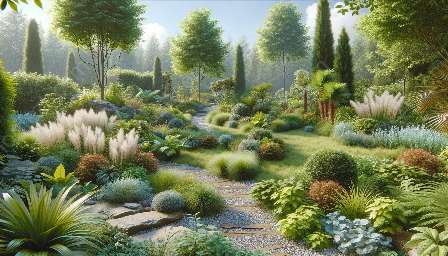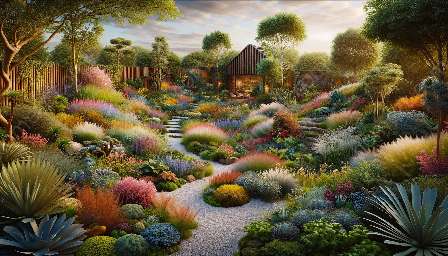Welcome to the world of wildlife gardening, where nature and design harmoniously come together to create sustainable and biodiverse outdoor spaces. In this comprehensive guide, we will explore the concept of wildlife gardening, its compatibility with garden design, and how you can transform your yard and patio into thriving ecosystems that support a variety of wildlife.
Understanding Wildlife Gardening
Wildlife gardening involves creating a welcoming environment for a variety of creatures, from birds and butterflies to insects and small mammals, by providing suitable habitats, food sources, and shelter within your garden and outdoor areas. The aim is to mimic natural ecosystems and support biodiversity, creating a balanced and sustainable environment for both plants and animals.
Compatibility with Garden Design
Integrating wildlife-friendly elements into your garden design is essential for creating an attractive and functional space that also supports local wildlife. By carefully selecting native plants, incorporating water features, and creating nesting and sheltering opportunities, you can seamlessly blend wildlife habitats with your overall garden design, adding depth and character to your outdoor space.
Enhancing Your Yard and Patio
Your yard and patio can also play a vital role in supporting wildlife. By choosing wildlife-friendly plants, installing bird feeders and houses, and providing water sources such as birdbaths or small ponds, you can transform these areas into inviting habitats for various species. Additionally, integrating natural materials, such as logs and rocks, can further enhance the wildlife appeal of your yard and patio spaces.
Creating a Haven for Wildlife
To create a haven for wildlife in your garden and outdoor spaces, consider the following key principles:
- Plant Diversity: Incorporate a variety of native plants with different flowering times to provide nectar and pollen for a diverse range of pollinators throughout the seasons. Additionally, include plants that provide food sources, such as berries and seeds, for birds and mammals.
- Water Sources: Install a bird bath, pond, or small water feature to offer wildlife a vital source of drinking and bathing water. These features can also attract amphibians and other aquatic species, adding to the biodiversity of your outdoor space.
- Shelter and Nesting Opportunities: Create sheltered areas by incorporating dense shrubs, native hedgerows, and log piles. Nesting boxes for birds and bats can also provide essential breeding and roosting sites, further supporting local wildlife populations.
- Minimize Chemical Use: Avoid using pesticides and herbicides in your garden, as these can have harmful effects on wildlife. Opt for natural pest control methods and organic gardening practices to maintain a healthy and balanced ecosystem.
Lifestyle Benefits of Wildlife Gardening
Embracing wildlife gardening not only benefits the environment and local biodiversity but also enhances your overall outdoor experience. The presence of diverse bird and insect species can create a tranquil and captivating atmosphere, adding a deeper connection to nature and a sense of fulfillment to your outdoor lifestyle.
Conclusion
By integrating the principles of wildlife gardening into your garden, yard, and patio spaces, you can create beautiful and sustainable landscapes that support and nurture local wildlife. Embrace the beauty of nature and design, and embark on a journey to transform your outdoor areas into thriving havens for plants and animals, fostering a harmonious and biodiverse environment for future generations to enjoy.




